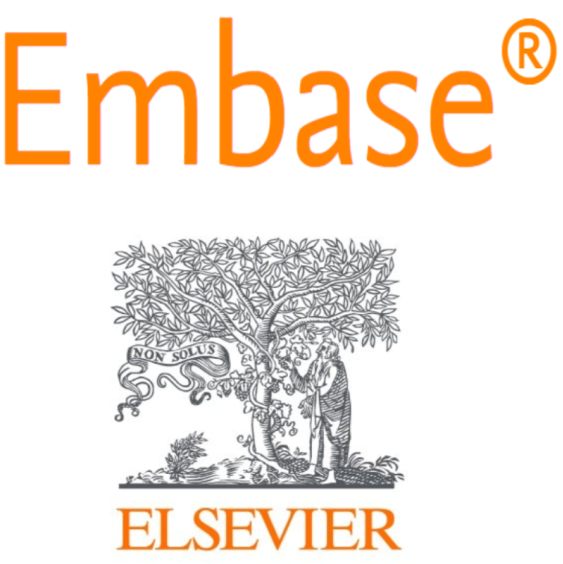The Effect of Using Rebozo Technique during Labor on the Sensation of Labor Pain and Labor Duration
DOI:
https://doi.org/10.56101/rimj.v4i1.152Keywords:
Childbirth, Labor duration, Labor pain, Midwifery, Rebozo techniqueAbstract
Background: Labor pain is one of the most severe pain types known and it is especially more intense in primiparous women. For this reason, this experimental study was conducted on the rebozo technique applied during labor in primiparous pregnant women to determine its effect on the perception of labor pain and labor duration.
Methods: This study was conducted between 1 July 2021 and 31 January 2022 in a private institution with two groups, 30 patients got treated with rebozo, rebozo group, 30 people in the control group, with a total of 60 patients. Data collection tools included patient information form, partograph form, Visual Analog Scale (VAS). Data was analysed with SPSS. Physical characteristics were similar (p>0.05).
Results: Application of Rebozo technique shortened the duration of the active phase of labor, the duration of the total active phase and the duration between the active phase and delivery. VAS score was found to be significantly lower with Rebozo technique application (p<0.05).
Conclusion: The study suggests that the rebozo technique is a reliable and effective method for reducing labor duration and pain sensation.
References
Köksal Ö, Taşçı Duran E. Doğum Ağrısına Kültürel Yaklaşım. DEUHYO ED. 2013;6(3):144–8.
Tuğcu B, Haşimoğlu O. Ağrı Cerrahisinin Tarihçesi. Türk Nöroşir Derg. 2019;29(2):122–6.
Ertem G. Doğumda Analjezi ve Anestezi. In: Şirin A, editor. Kadın Sağlığı. 1. Baskı. İstanbul: Bedray Basın Yayıncılık; 2008. p. 663–8.
Purwanti AS. Effect of Aplication Rebozo Techniques on Pain Intensity and Anwiety Levels to the Mother Gives Birth 1st Phase of Active. In The 4th International Conference On Health Science (ICH); 2020.
Çelik H, Çetinkaya BM. İntrapartum Bakım. In: Demir CS, Güleç Küçükgöz Ü, editors. Obstetrics and Gynecology (Obstetrik ve Jinekoloji). 7. Baskı. Ankara: Akademisyen Tıp Kitabevi; 2015. p. 93–104.
Bonapace J, Gagne P, Chaillet N, Gagnon R, Hebert E, Buckley S. Physiologic Basis of Pain in Labour and Delivery: An Evidence-Based Approach to its Management. Journal of Obstetrics and Gynaecology Canada (JOGC). 2018;40(2):227–45.
Hoyt MR. Anesthesia for Labor and Delivery. In: Martin JR, Fanaroff AA, Walsh CM, editors. Fanaroff and Martin’s Neonatal-Perinatal Medicine. 11. Editio. Philadelphia: Elsevier; 2019. p. 424–39.
Moralar Genç D, Türkmen A, Altan A. Doğum Analjezisi. Okmeydanı Tıp Dergisi. 2011;27(1):5–11.
Çerezci Güner Ö, Kavlak O. Doğum. In: Sevil Ü, Ertem G, editors. Perinatoloji ve Bakım. Ankara: Nobel Tıp Kitabevleri; 2016.
Aksoy DY, Erdemoğlu Ç, Özşahin Z, Karakayalı Ç. Annenin Doğumu Algılamasının Doğum Sonu Güvenlik Hissine Etkisi. Ebelik ve Sağlık Bilimleri Dergisi. 2019;2(3):88–95.
Tandoğan Ö, Oskay Ü. Doğum Ağrısının Giderilmesinde Rebozo Tekniği. BANÜ Sağlık Bilimleri ve Araştırmaları Dergisi. 2021;3(1):39-44.
Minehart DR, Minnich EM. Childbirth Preparation and Nonpharmacologic Analgesia. In: Chestnut D, Wong C, Tsen L, Kee NDW, Beilin Y, Myhre J, et al., editors. Chestnut’s Obstetric Anesthesia. 6. Edition. China: Elsevier; 2020. p. 441–52.
Caughey BA, Tilden E. Nonpharmacologic approaches to management of labor pain [Internet]. UpToDate. 2021. Available from: 12/02/2022 tarihinde erişim sağlandı.
Kirby G. Comfort and Strength in Labor Using the Rebozo [Internet]. Feed Fabrik; 2011. Available from: 15/02/2022 tarihinde https://static1.squarespace.com/static/560c5069e4b093206c059561/t/5631968ae4b03329c8b078f6/1446090378105/RebozoBasicBook-3-2.pdf sitesinden 30/01/2021 adresinden erişim sağlandı.
Sales WB, C OAS, Rocha ES, Constantino AEA, Geronimo CA, Elesbao JVG, et al. A Técnica de Rebozo na Atenção à Mulher no Ciclo Gravídico-puerperal: Uma Revisão Integrativa. Research, Society and Development. 2020;9(7).
Aydın R, Ünlü V, Hüseyinoğlu S. Makat Prezantasyonun Sefalik Rotasyonunda Etkili Olan Yöntemler. Sağlık Bilimleri ve Araştırmaları Dergisi. 2020;2(2):103–12.
Cohen SR, Thomas CR. Rebozo Technique for Fetal Malposition in Labor. Journal of Midwifery&Women’s Health. 2015;60(4):445–51.
Iversen ML, Midtgaard J, Ekelin M, Hegaard HK. Danish women’s experiences of the rebozo technique during labour: A qualitative explorative study. Sexual and Reproductive Healthcare. 2017;11:79–85.
Tandoğan Ö. Doğum Eyleminde Kullanılan Rebozo Tekniği’nin Algılanan Doğum Ağrısına ve Doğum Memnuniyetine Etkisi. T.C. İstanbul Üniversitesi- Cerrahpaşa Lisansüstü Eğitim Enstitüsü, Doktora Tezi, İstanbul; 2021.
Munafiah D, Puji L, Mike A, Parada M, Rosa M, Demu M. Manfaat Teknik Rebozo Terhadap Kemajuan Persalinan. Midwifery Care Journal. 2020;1(3):23–7.
Gözükara N. Gebelerin Bel ve Sırt Ağrılarına Rebozo Masajının Etkisi. T.C. Ege Üniversitesi Sağlık Bilimleri Enstitüsü, Yüksek Lisans Tezi, İzmir; 2020.
Turan Z. İntrapartum Dönemde Rebozo Uygulamasının Doğum Ağrısı, Kaygı ve Doğum Deneyimi Üzerine Etkisi. T.C. İnönü Üniversitesi Sağlık Bilimleri Enstitüsü, Doktora Tezi, Malatya; 2023.
Damayanti A, Fatimah YU. The Effect Of Rebozo Technique To Recuding Pain and Progress Maternity. In: Proceeding of the 4th International Conference on Interprofessional Health Collaboration and Community Empowerment. 2021. p. 208–10.
ACOG Committee Opinion No. 766: Approaches to Limit Intervention During Labor and Birth. Obstet Gynecol. 2019;133(2).
Published
How to Cite
Issue
Section
License
Copyright (c) 2024 Dilek Sinem Uludağ, Asiye Ayar Kocatürk

This work is licensed under a Creative Commons Attribution 4.0 International License.









